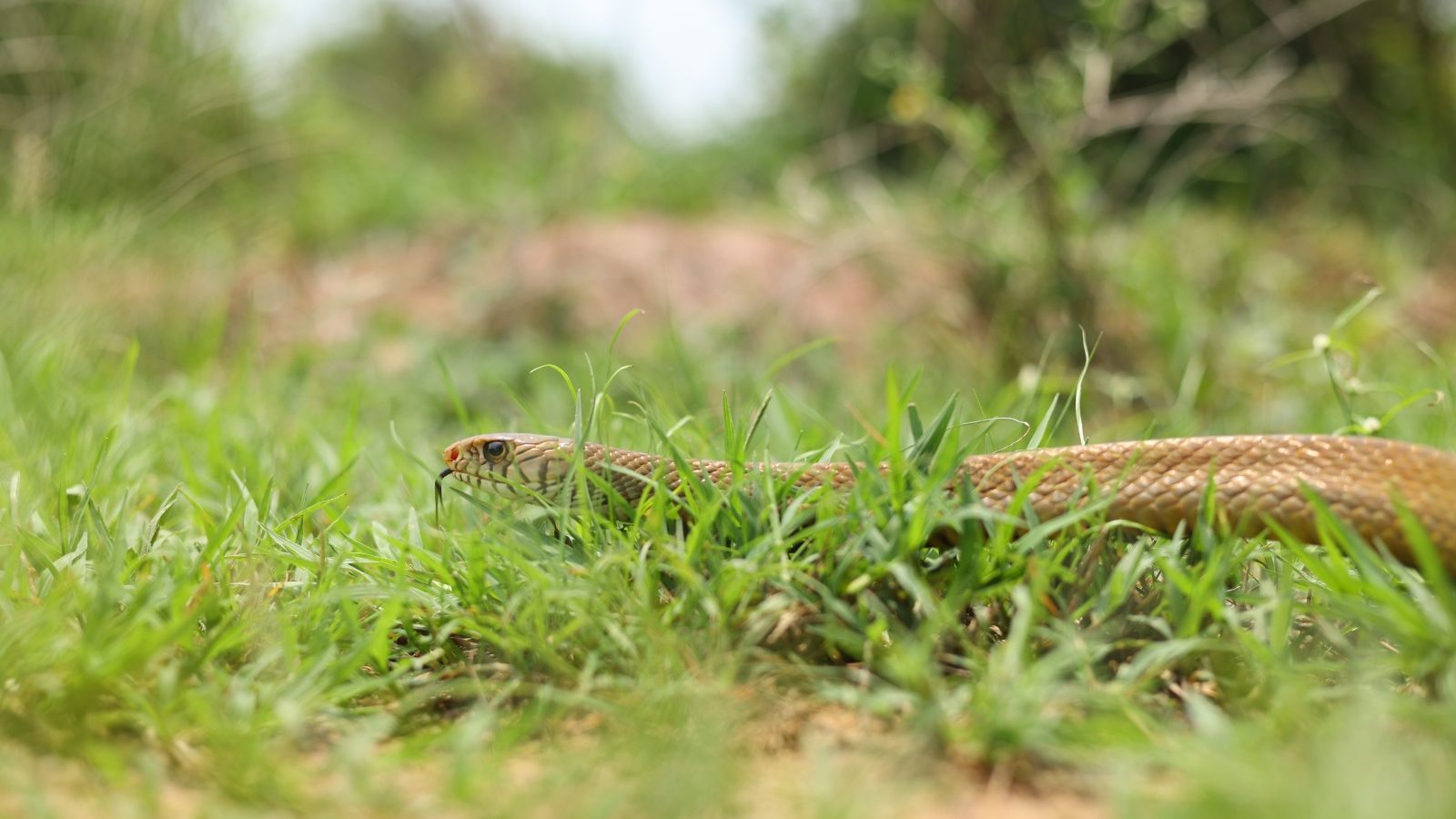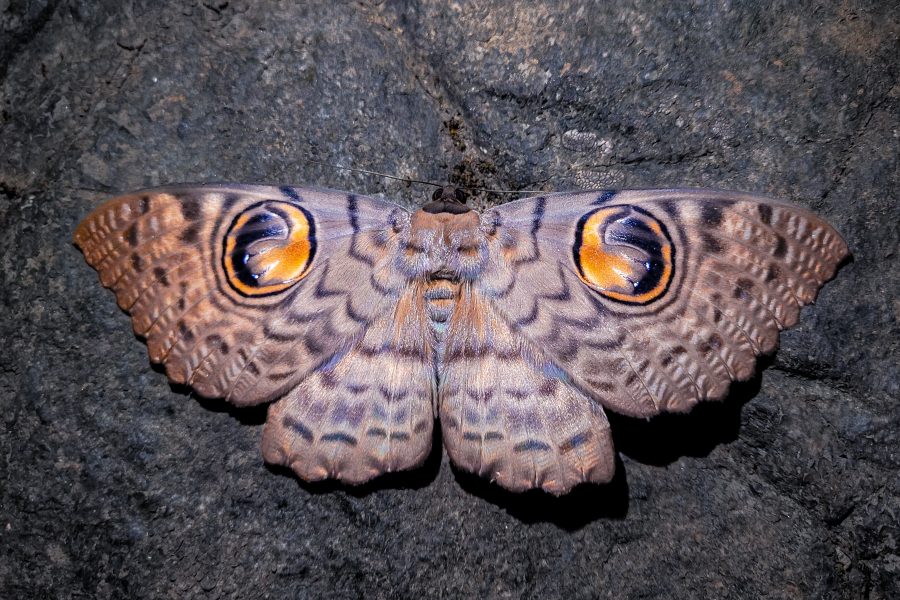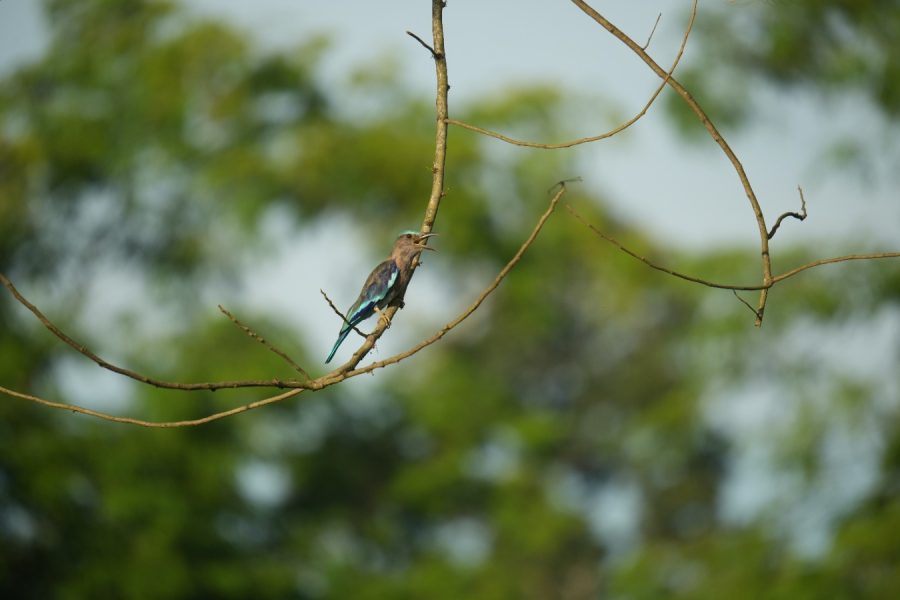Nature inherently fosters coexistence among all life forms, creating spaces for living and nonliving elements to thrive together. However, with rapid urbanisation, the natural boundaries between humans and wildlife, particularly reptiles, have blurred. Reptiles such as snakes are being increasingly displaced, often venturing into human settlements that have encroached their wild spaces. This results in frequent human-snake encounters, often sparking fear that leads to harm or fatality of the reptile.
When a snake is spotted, it’s essential to remain calm and seek professional help first. Snakes are more than often misidentified and bracketed under the venomous category, however, several non-venomous snakes thrive around us. The common wolf snake, for instance, has been frequently mistaken to be the highly venomous common krait. This overshadows the fact that the common wolf snake actually helps to control the rodent population in urban spaces. An interesting indication to identify a non-venomous snake or a venomous one is to observe their eyes. While venomous snakes have eyes that resemble a slit, non-venomous snakes have round pupils. In cities like Delhi, snakes often find refuge in drains, where they can find food with convenience and a cool shelter. Awareness of non-venomous snakes is the first and most important step to dispel myths and misconceptions that surround reptiles. Let’s look at some of the non-venomous snakes commonly found and rescued in and around Delhi.
Indian Rat Snake
The Indian rat snake, also called the Oriental rat snake, is one of the most widely distributed non-venomous snakes in India. These reptiles are known for their adaptability in various environments, including agricultural lands, forests, and urban locales. As excellent climbers and swimmers, rat snakes can be found both in trees and water bodies. Rat snakes are highly active during the day and are known for their speed, and are often called “the fastest moving serpent in India”. When threatened, they display a unique defence mechanism — they inflate their necks to resemble a cobra, a deception to protect themselves. However, their bite is harmless to humans.
Indian rat snakes use the method of constriction to overcome their prey, which can include rodents, birds, frogs, and small mammals. By keeping the rat population in check, this reptile species benefits the urban as well as agricultural ecosystem. Locally known in Hindi as dhaman, this snake has been called a farmer’s friend, protecting crops from being infested by rodents.
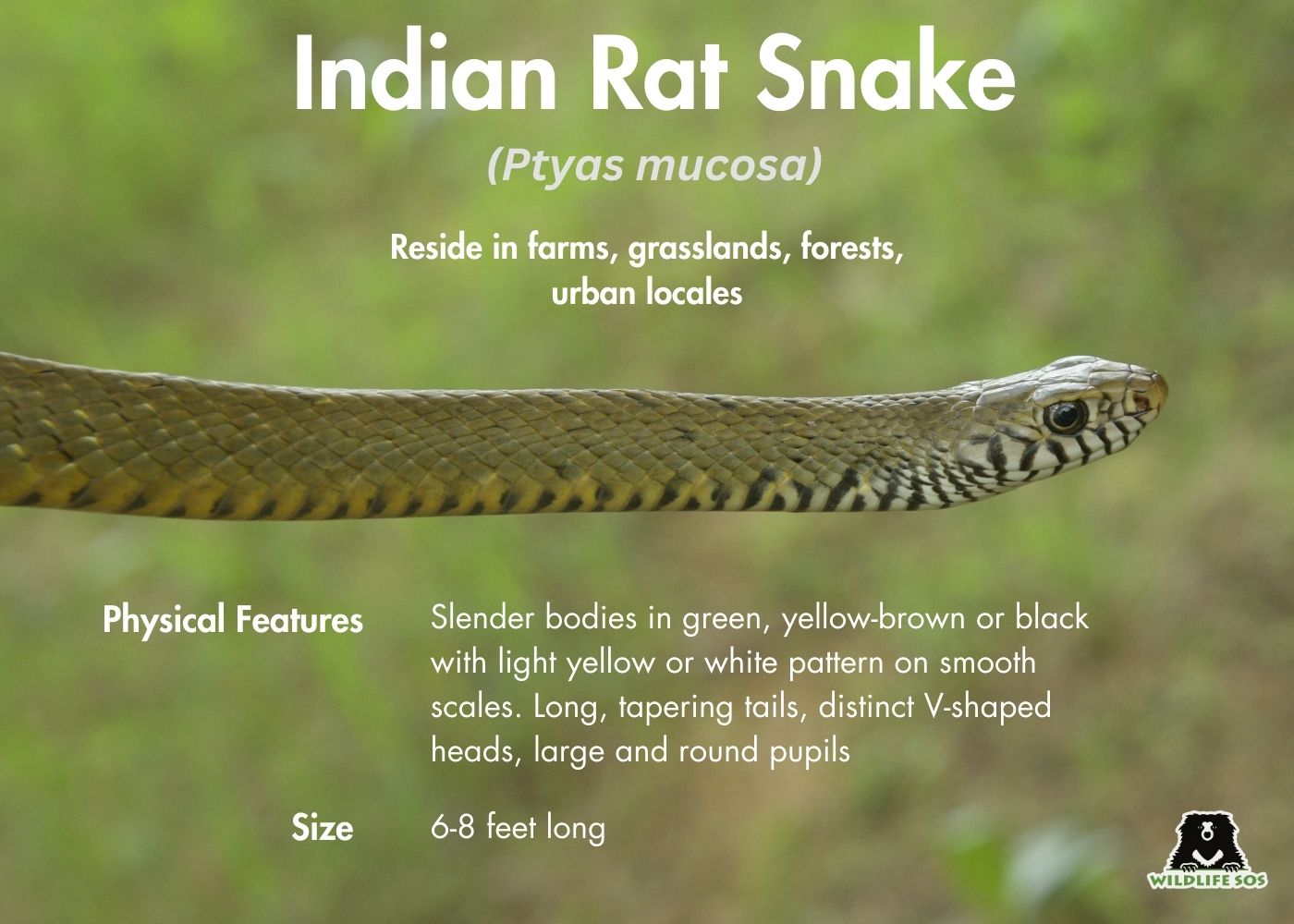
Russell’s Kukri Snake
The Russell’s kukri snake is a non-venomous species named after its curved fangs that resemble the kukri, a traditional Nepali knife. It is small in size, but it can use its sharp teeth to feed on reptile eggs. It is also an efficient predator of small creatures such as insects and lizards.
This serpent is also known as the streaked kukri snake as it has a pattern of many horizontal streaks from head to tail. In case of any danger to itself, the reptile forms coils with its body and elevates its upper body to threaten a strike. Although its bite is not dangerous to humans, its knife-like teeth can cause injury to the skin.
Checkered Keelback
The checkered keelback, also known as the Asiatic water snake and or locally as pani ka saanp, is a non-venomous serpent. As their common names imply, these semi-aquatic snakes can be commonly found near water bodies such as drains, ponds, and lakes in Delhi. Checkered keelbacks primarily feed on small fish and water frogs, therefore maintaining the population of aquatic species. Their diet may also include mice, lizards, birds, insects, and even small reptiles.
As a diurnal species, the checkered keelback is most active during the day. When it encounters a threat, it often flattens its head and raises its body in a pose that resembles that of the venomous Indian cobra, leaving locals baffled and fearful. While checkered keelbacks pose no harm to humans since they lack venom, they do make repetitive attempts to bite with their sharp teeth.
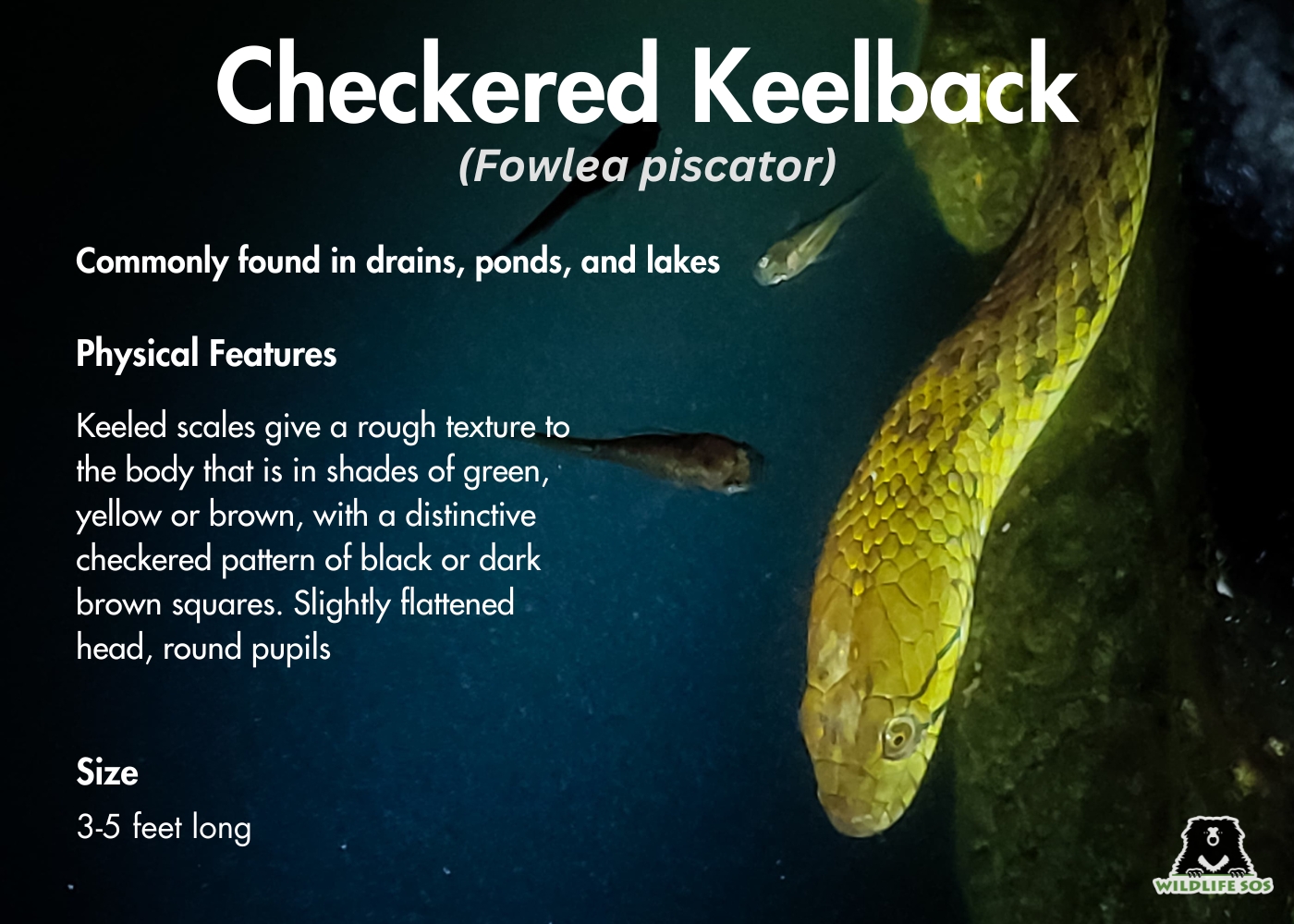
Indian Rock Python
The Indian rock python, locally known as ajgar, is the largest non-venomous serpent found in India. As an ambush predator, it relies on its camouflage to remain hidden while waiting for its prey. It also has heat-sensing pits that help it to detect small mammals like rats and birds in its surroundings. Once the target is located, the python strikes swiftly, using its sharp teeth to grasp the prey before constricting its body around it, suffocating the animal before swallowing it whole.
Indian rock pythons play a beneficial role in agricultural areas by helping to control rodent populations that cause damage to crops. Unfortunately, this species is illegally hunted for its skin that is used in making leather products.
Red Sand Boa
The red sand boa, commonly called the Indian sand boa, is the largest sand boa in the world. The slow moving, non-venomous snake has a peculiar tendency to create burrows in the ground to rest within. Here, it also finds its next meal that would consist of small mammals like rats and mice, lizards as well as insects. A red sand boa also has a unique physical feature: Its round head closely resembles the shape of its tail, making it popularly known as do muha or a two-headed snake.
While this appearance can easily confound those who spot this reptile, it is also the reason why the species has become the subject of various superstitious beliefs. The “two-headed” red sand boa is mistakenly believed to bring good luck, and is therefore targeted for illegal trade due its high demand in China, Nepal, and even in Western countries.
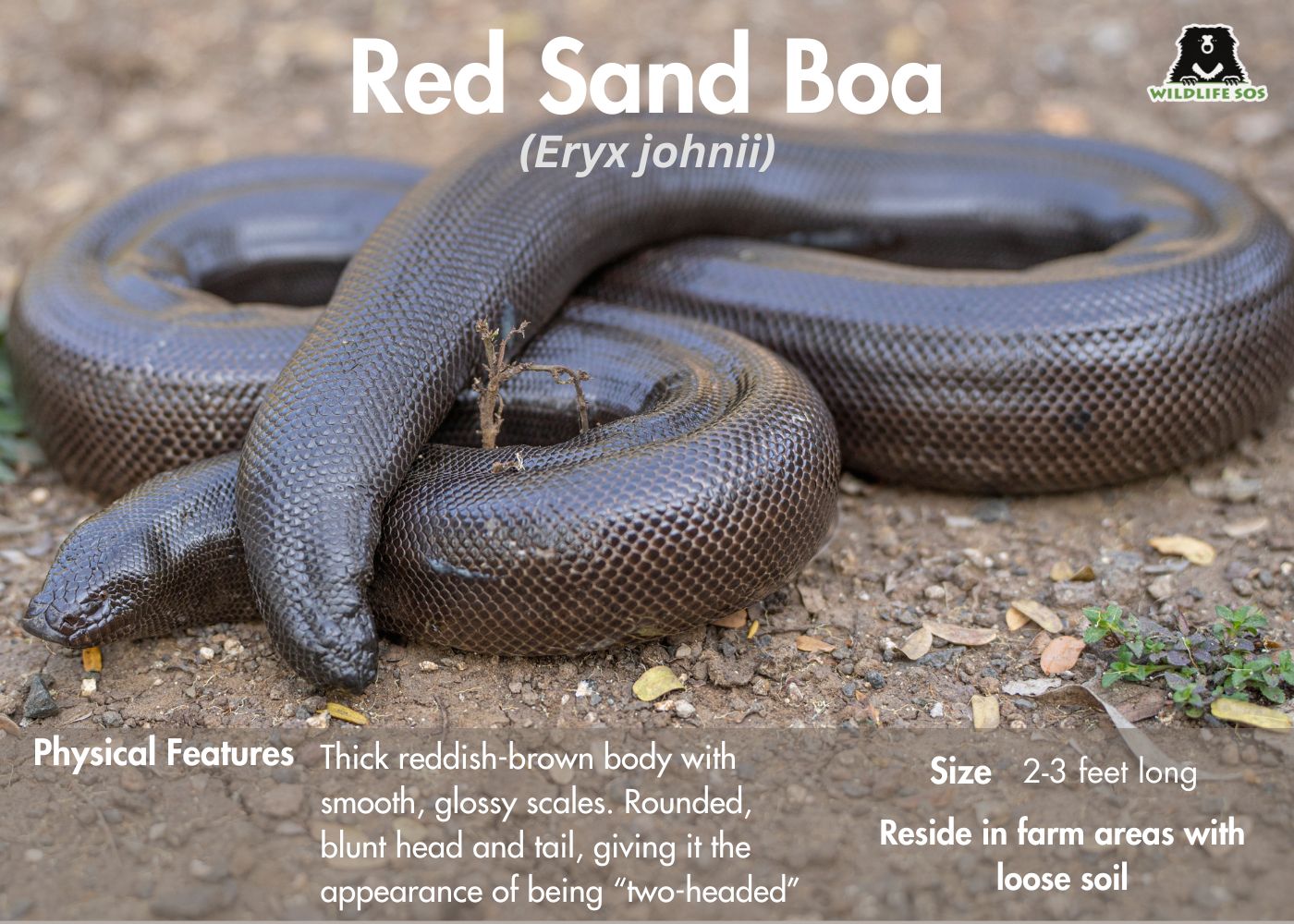
Common Wolf Snake
The common wolf snake, locally known as kavadya, is a small, non-venomous species that has often been found in residential spaces and gardens, and also in agricultural lands. This reptile is frequently mistaken for the highly venomous common krait due to their similar coloration, causing unnecessary panic among people and harm to the snake.
Like all snakes, the common wolf snake defends itself by striking with its sharp fangs when it senses potential threat. Despite being non-venomous, its bite can cause severe lacerations. As a nocturnal hunter, the common wolf snake primarily preys on small lizards and occasionally rodents as well.
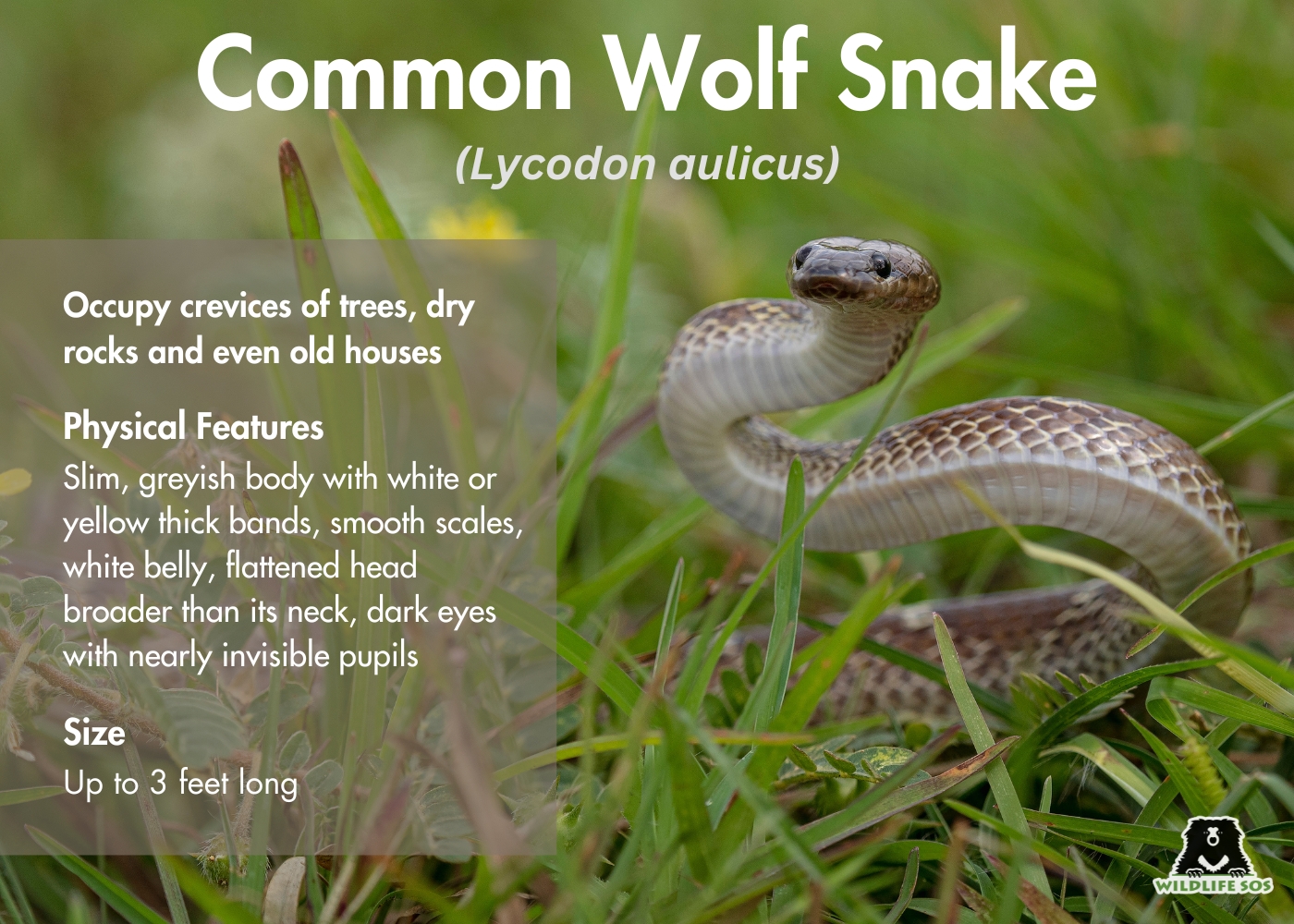
[Graphic © Wildlife SOS/ Ankita Kanwar]
Wildlife SOS Saves Snakes!
While snakes benefit mankind by maintaining a healthy balance in the ecosystem, habitat destruction has caused devastation to their wild habitats, resulting in frequent unnatural sightings within cities. Wildlife SOS’s Rapid Response Unit in Delhi-NCR has been addressing calls concerning wildlife in distress, rescuing as many as 118 reptiles in the first half of this year, many of which include checkered keelbacks, Indian wolf snakes, Indian rat snake and Indian rock pythons. The challenge was to successfully retrieve snakes found in unusual spaces such as car motor pumps or inside almirahs.
With desired tools and expertise, the team is able to carry out snake rescue operations that can avert harm to both humans and the reptile. In a sensitive rescue that took place in the month of July 2024, a 3-foot-long Indian rat snake was extricated from within the Prime Minister’s residence in New Delhi. The same month also saw the saving of an Indian rat snake measuring 7 feet in length caught entangled in a cricket net in Ghaziabad. In September, an Indian rock python was rescued from a guard house in Delhi’s Dera Mandi and a common wolf snake from a government school in Lodhi Estate.
Snakes play a vital role in controlling rodent populations, benefiting both agriculture and public health. Though often feared, snakes remain mysterious to many, and ignorance surely cannot feed human curiosity. To dispel mistaken beliefs with facts, Wildlife SOS organises awareness sessions among communities as well as young, eager minds.
In case you spot a snake in your locality, do not tackle it alone, reach out to the nearest wildlife authority instead. If you reside in any of the following locations, contact Wildlife SOS’s Rapid Response Units that on their helplines that are active 24×7:
- Delhi-NCR: +91-9871963535
- Agra, Uttar Pradesh: +91-9917109666
- Vadodara, Gujarat: +91-9825011117
- Jammu & Kashmir: +91-7006692300 or +91-9419778280
By supporting coexistence and raising awareness, we contribute to a balanced urban environment where both humans and wildlife can thrive.

